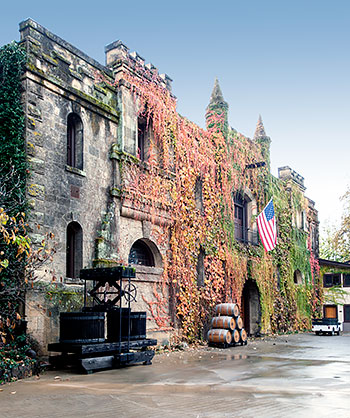National Register of Historic Places in Napa County
Alfred L. Tubbs Winery
AKA Chateau Montelena Winery
1429 Tubbs Lane
Calistoga
Built c1888
Alfred L. Tubbs built this stone winery that, in contrast to the prevalent wood wineries, regulated temperature and provided adequate space for wine to age before it was sold. Rare among Napa Valley wineries, the building resembles an English Gothic castle gatehouse with many of the defensive architectural features typical of that form such as rusticated stone walls, a crenellated parapet and bartizans with faux arrow slits.
In the 1890s, Tubbs was the largest winery in Calistoga and one of the largest in Napa County. The winery was important in shifting the Napa Valley wine industry from the production of poor-quality wine purchased locally for alcoholic content to well-made wines distributed throughout the world.
Prohibition, World War II and foreign tariffs caused the Napa Valley wine industry to fall into a decline that reached its nadir in 1960 when only twenty-five wineries were operating in the valley.
Gains were made in the 1960s and early 1970s, but it was not until the 1976 Judgment of Paris that Napa Valley and California wineries made a dramatic comeback. At the Paris tasting, select California wines were pitted against the finest French wines with the startling outcome that two California wines placed first: the 1973 Stag's Leap Cabernet Sauvignon and the 1973 Chateau Montelena Chardonnay.
The Judgment of Paris broke French domination of the fine wine market and triggered the resurgence of the wine industry in Napa Valley and other California wine regions.
Source: Adapted from the NRHP nomination form.

The property is now operated by Chateau Montelena Winery which is open to the public for tours and tastings.
